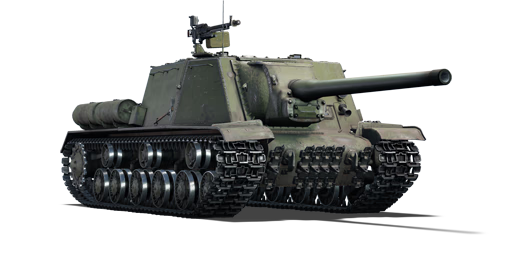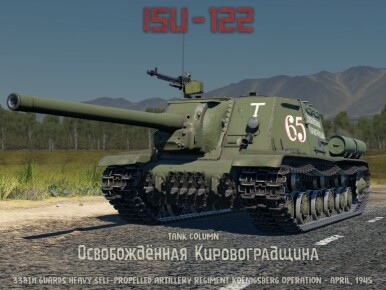



The ISU-122 was a Soviet assault gun used during World War II, mostly in the anti-tank role. The 122 mm A-19S tank gun was installed on the IS heavy tank chassis by engineers after the ISU-152 was developed, resulting in the creation of Object 242, the first ISU-122 prototype. Although testing went well, it was not put into mass production right away. Early in 1944, authorities from the state instructed unused IS heavy tank chassis to be equipped with a 122 mm A-19S tank gun, which resulted in mass production of the ISU-122.
Introduced in the Closed Beta Test for Ground Forces before Update 1.41, the ISU-122 should be used as a long-range sniper, making use of its high penetration shells, good accuracy, and good reverse speed. Choose a concealed place for sniping and engage targets at a distance to prevent the enemy from getting closer to the objectives. Always avoid the frontline to prevent being flanked or swarmed due to the tall profile and weak frontal armour.
| Ammunition | Type | Armor penetration (mm) at a distance: | |||||
|---|---|---|---|---|---|---|---|
| 10 m | 100 m | 500 m | 1000 m | 1500 m | 2000 m | ||
| APHE | 205 | 201 | 182 | 161 | 143 | 126 | |
| HE | 37 | 37 | 37 | 37 | 37 | 37 | |
| APHEBC | 205 | 203 | 192 | 178 | 166 | 155 | |
| Belt | Belt filling | Armor penetration (mm) at a distance: | |||||
|---|---|---|---|---|---|---|---|
| 10 m | 100 m | 500 m | 1000 m | 1500 m | 2000 m | ||
| API-T/IAI/API-T/AP-I(c) | 34 | 32 | 24 | 17 | 12 | 8 | |












Mobility | |
|---|---|
Protection |
|---|
Firepower | |
|---|---|
